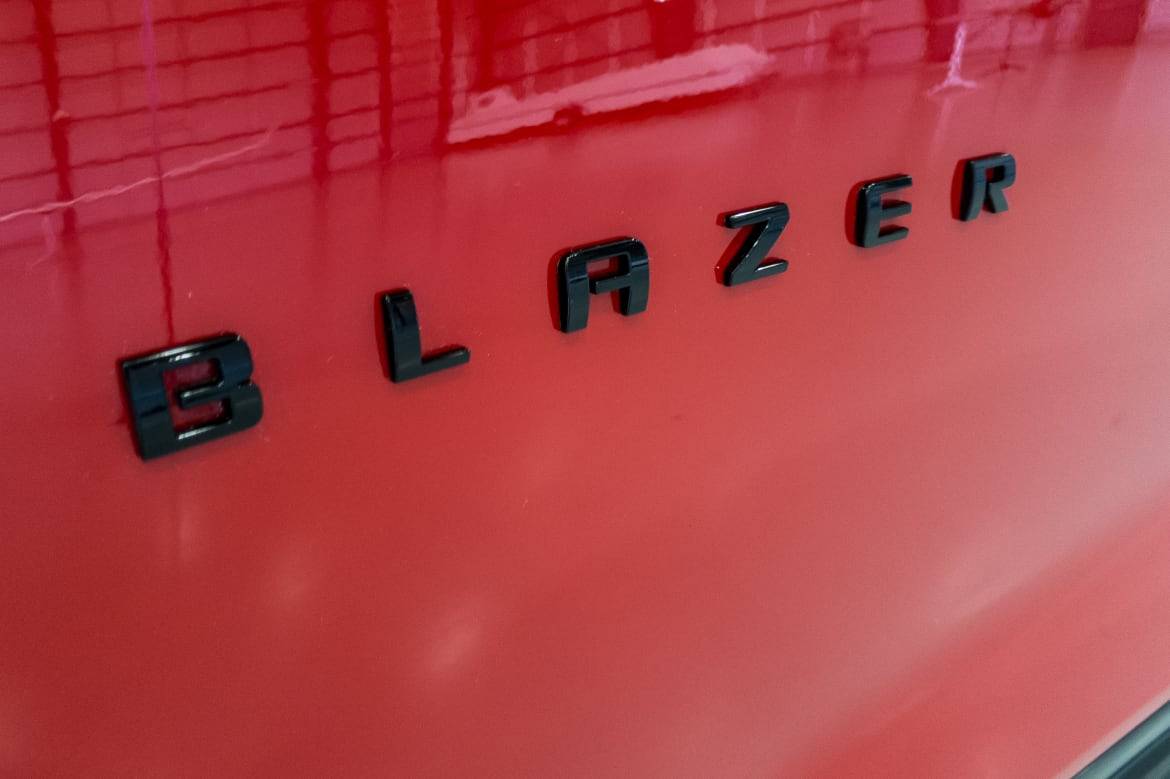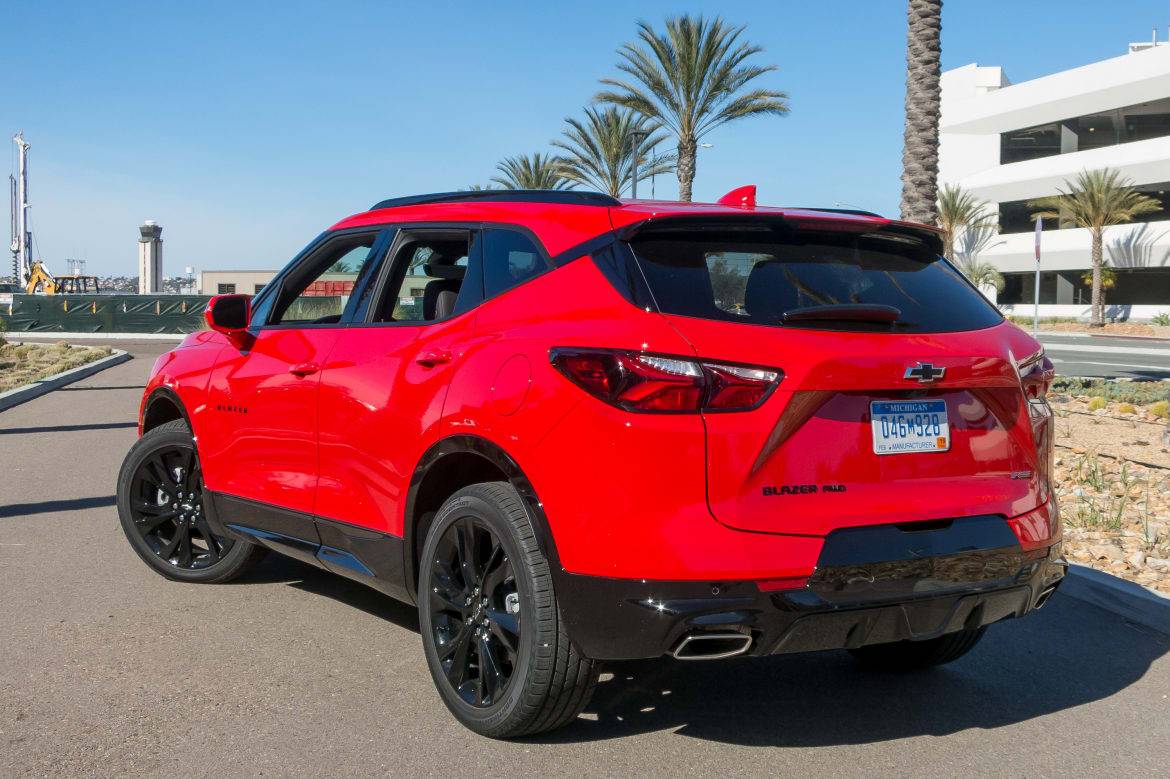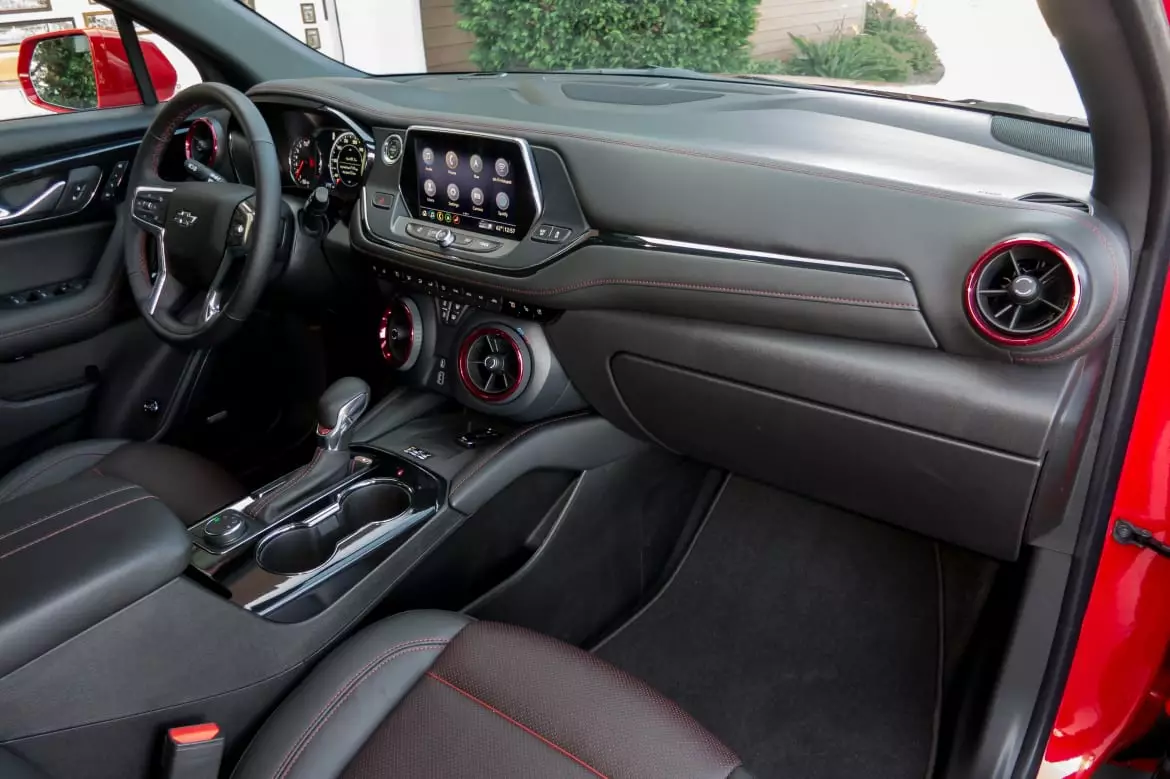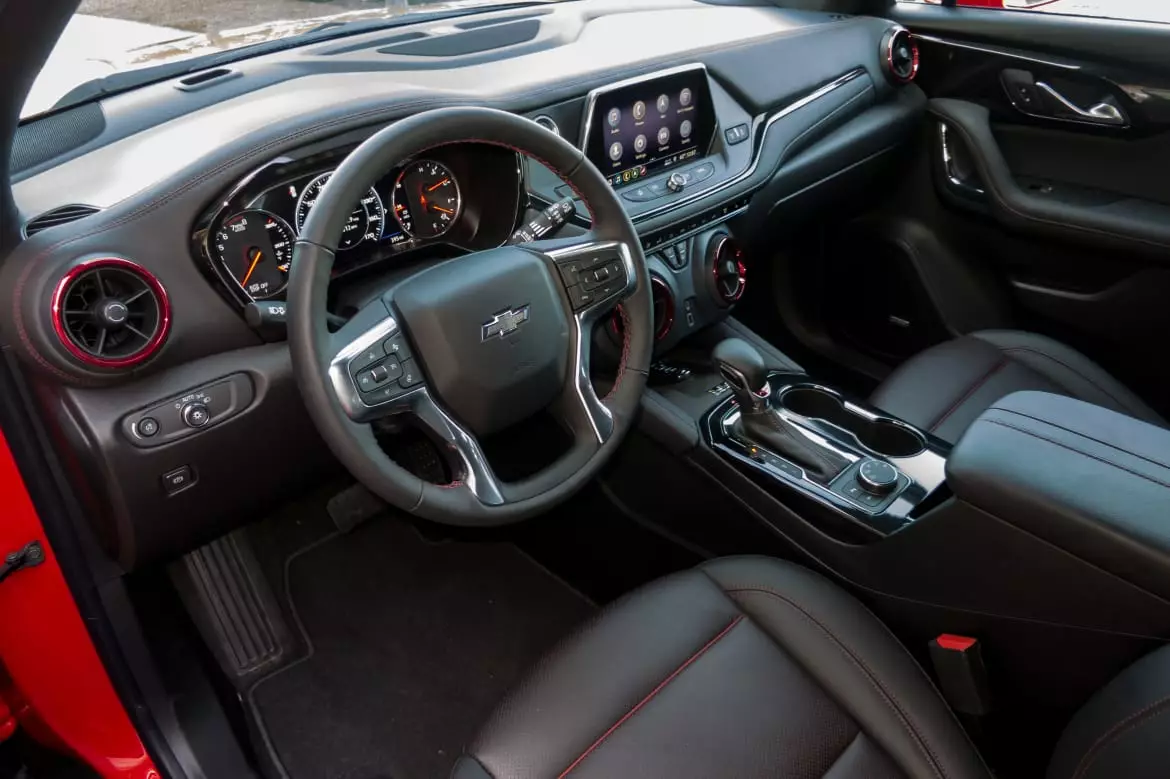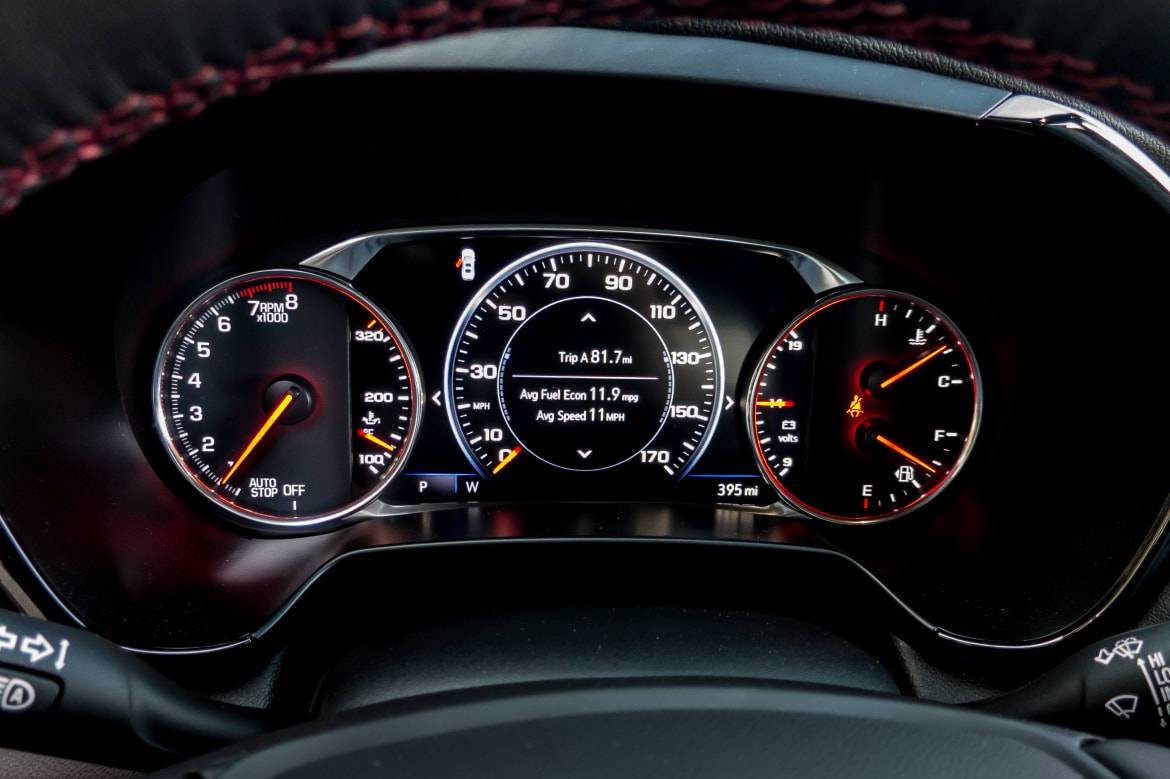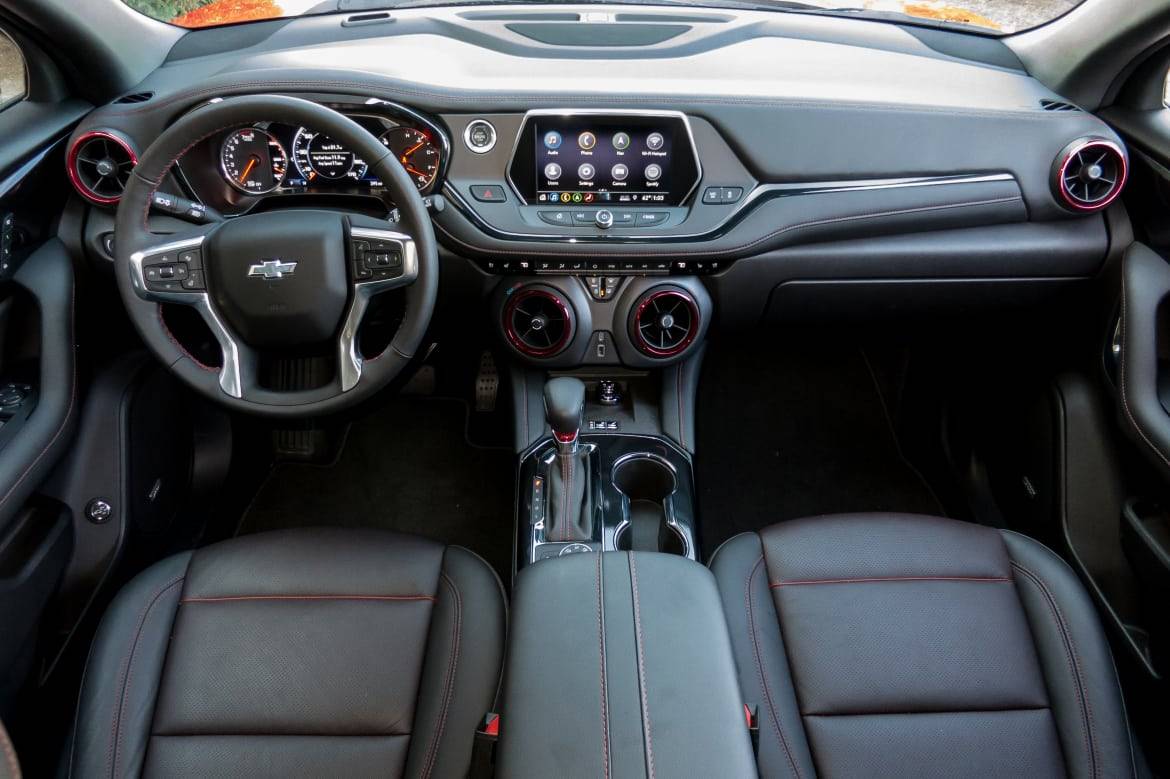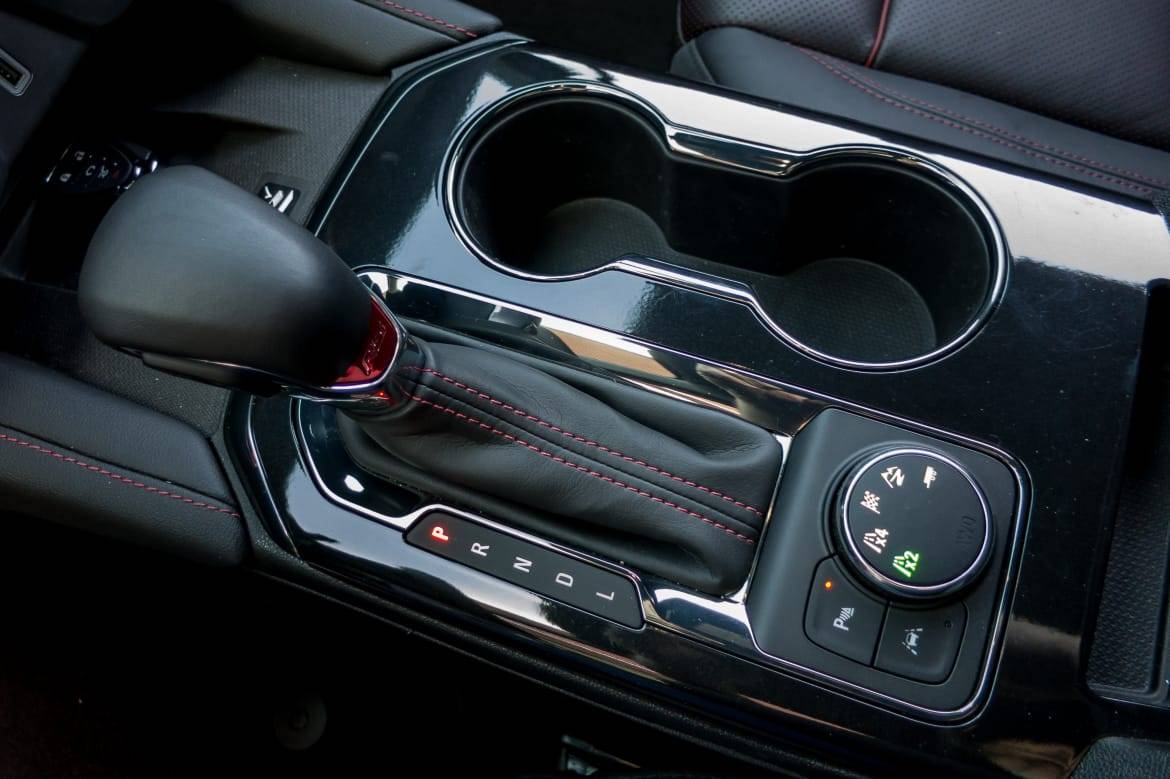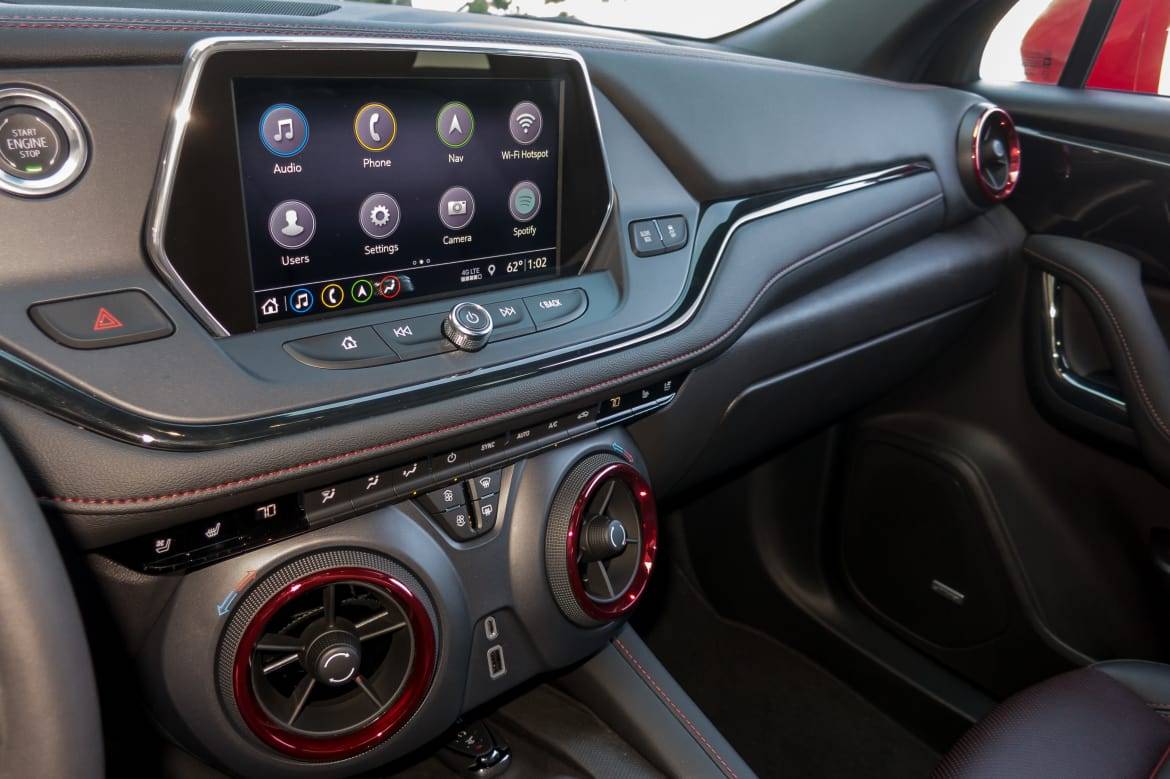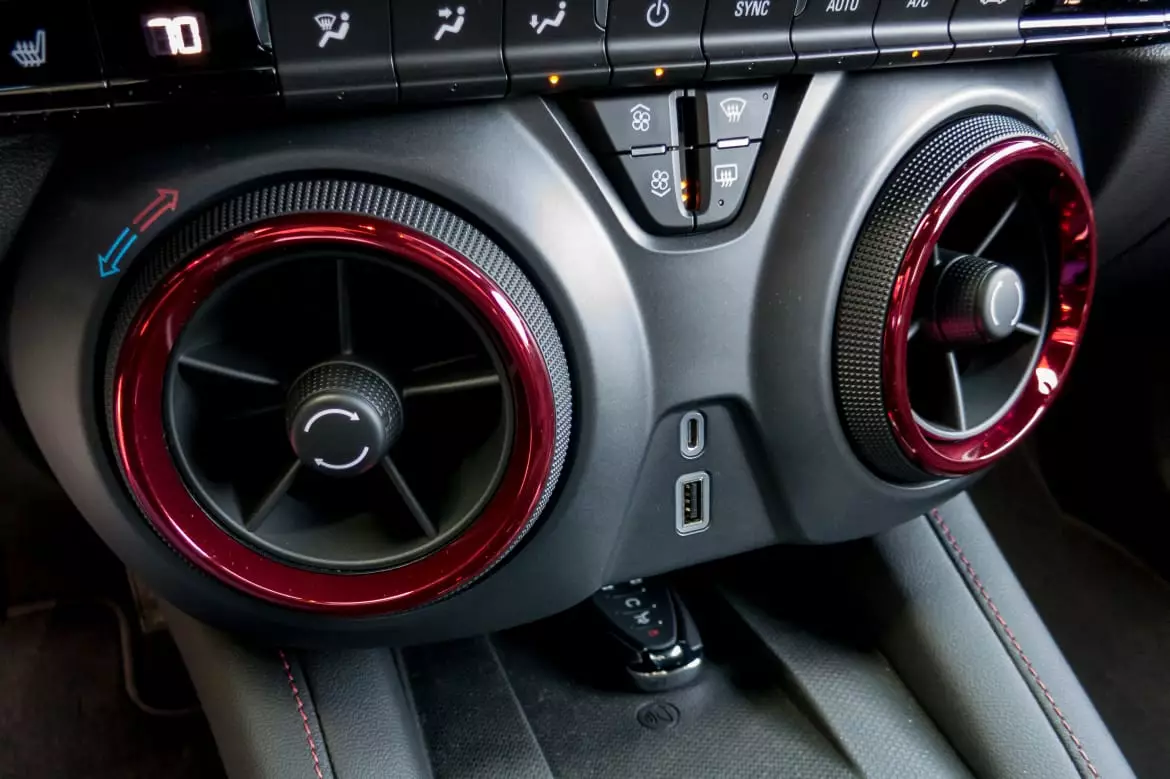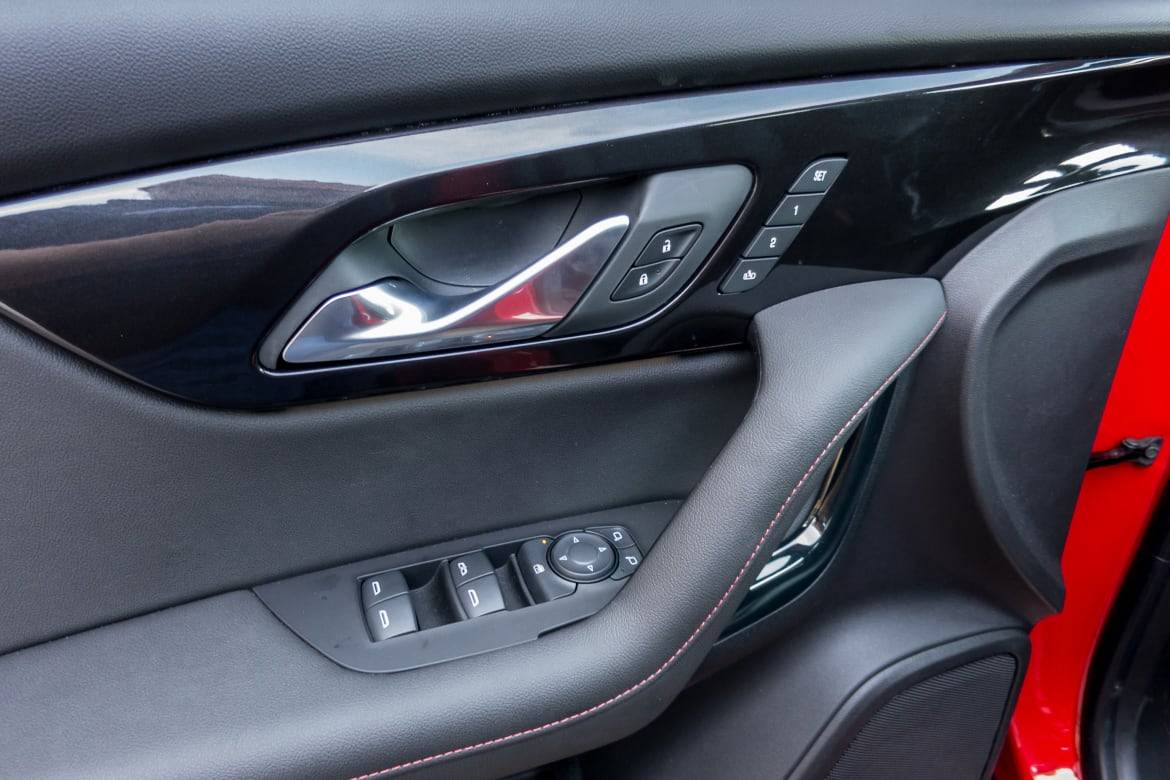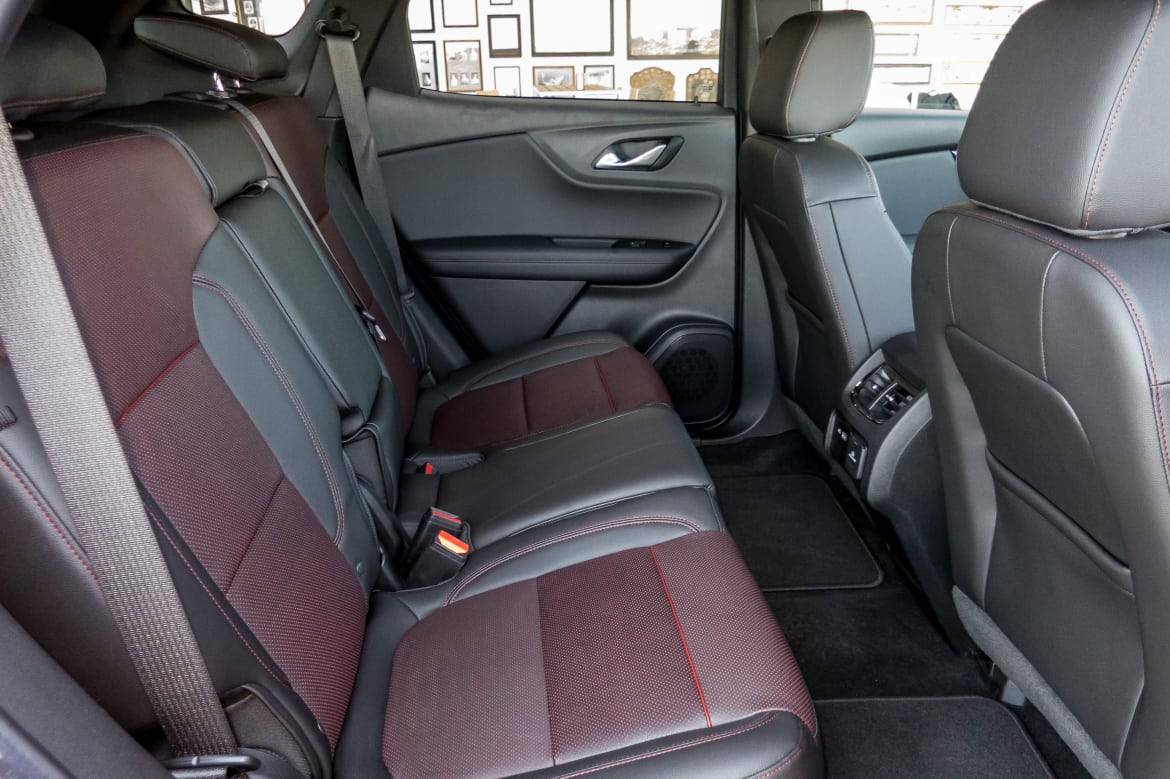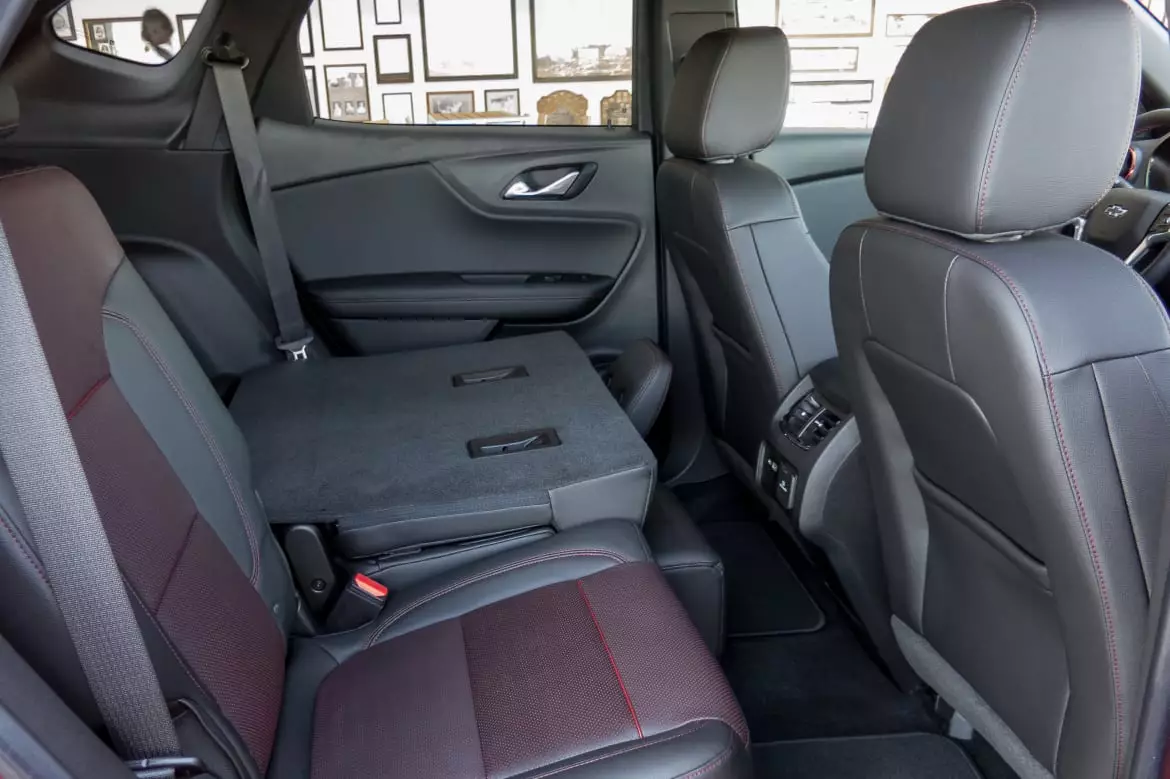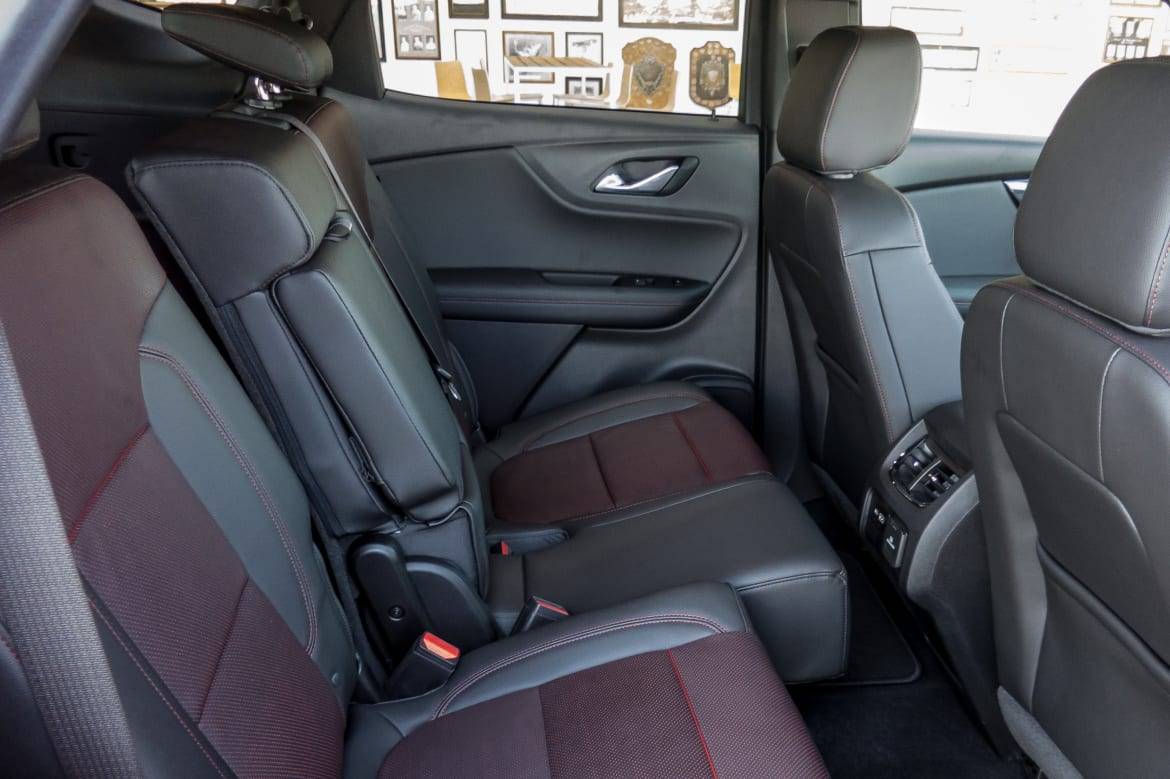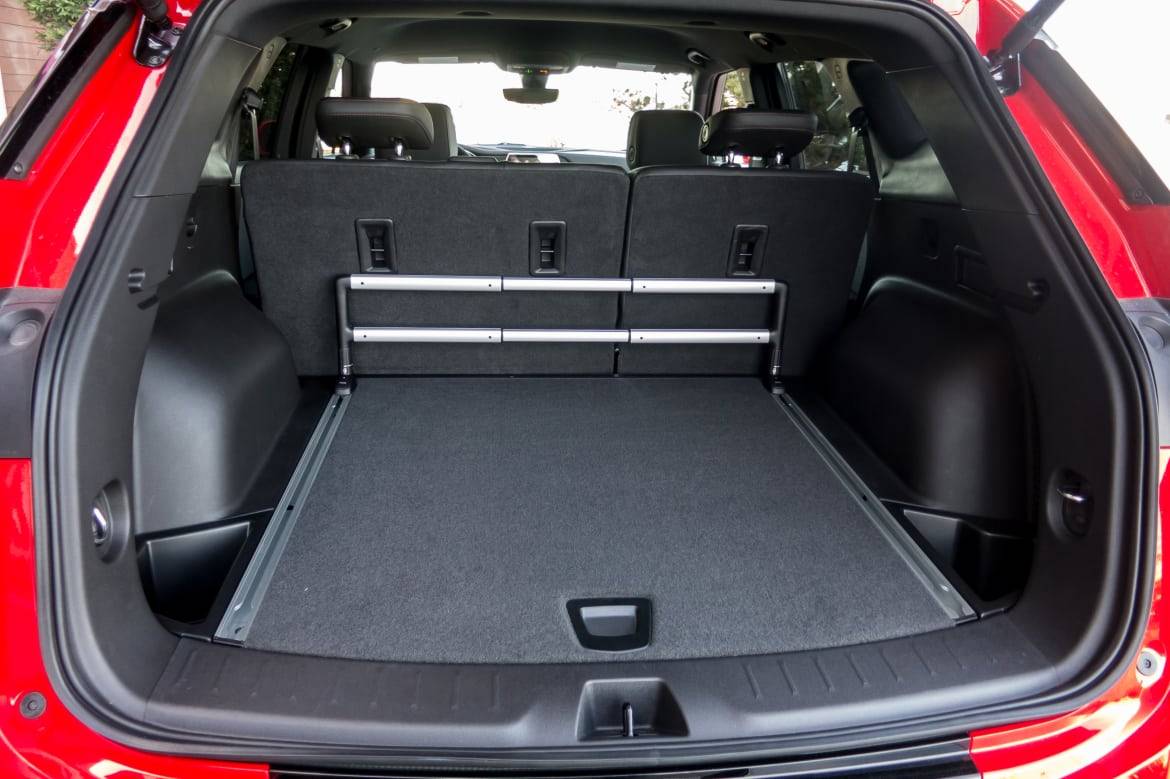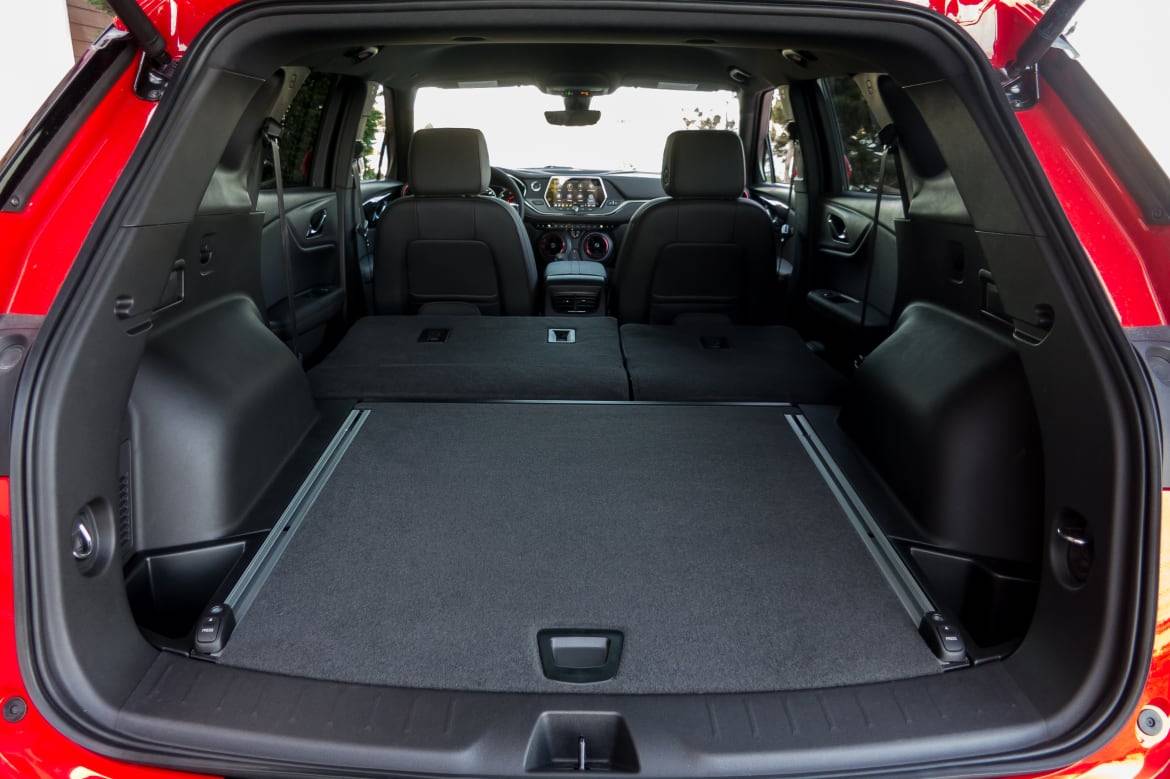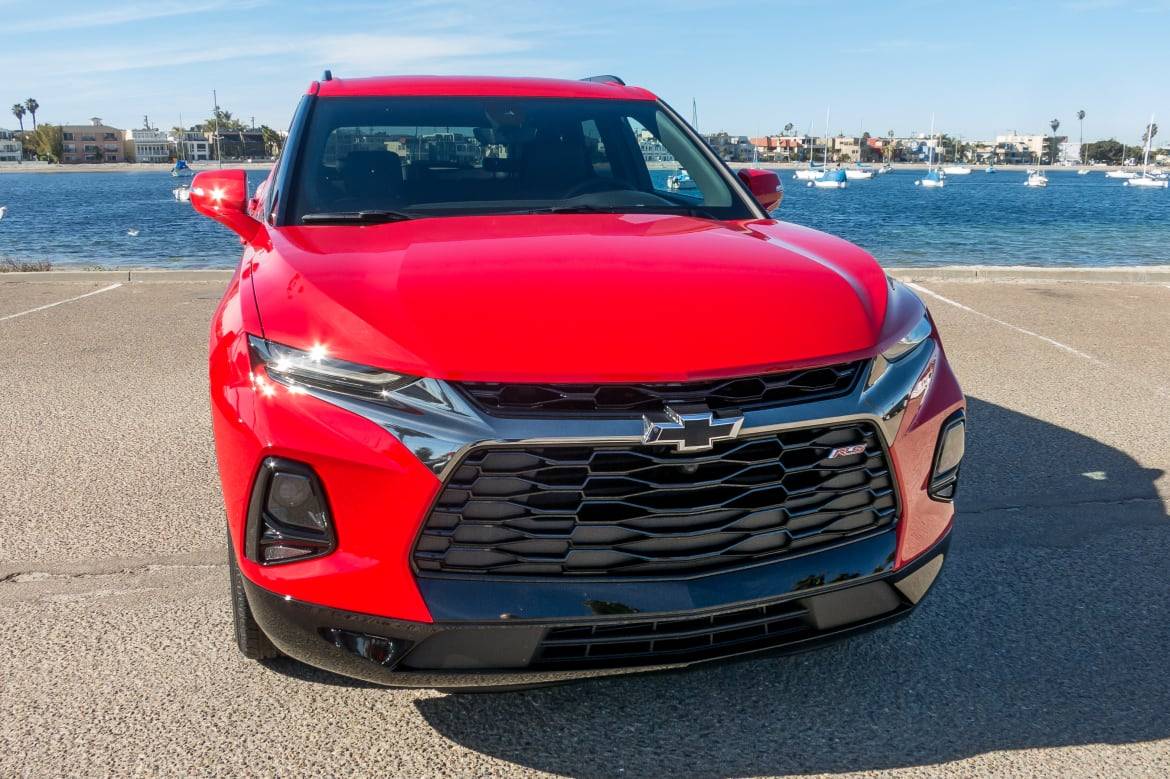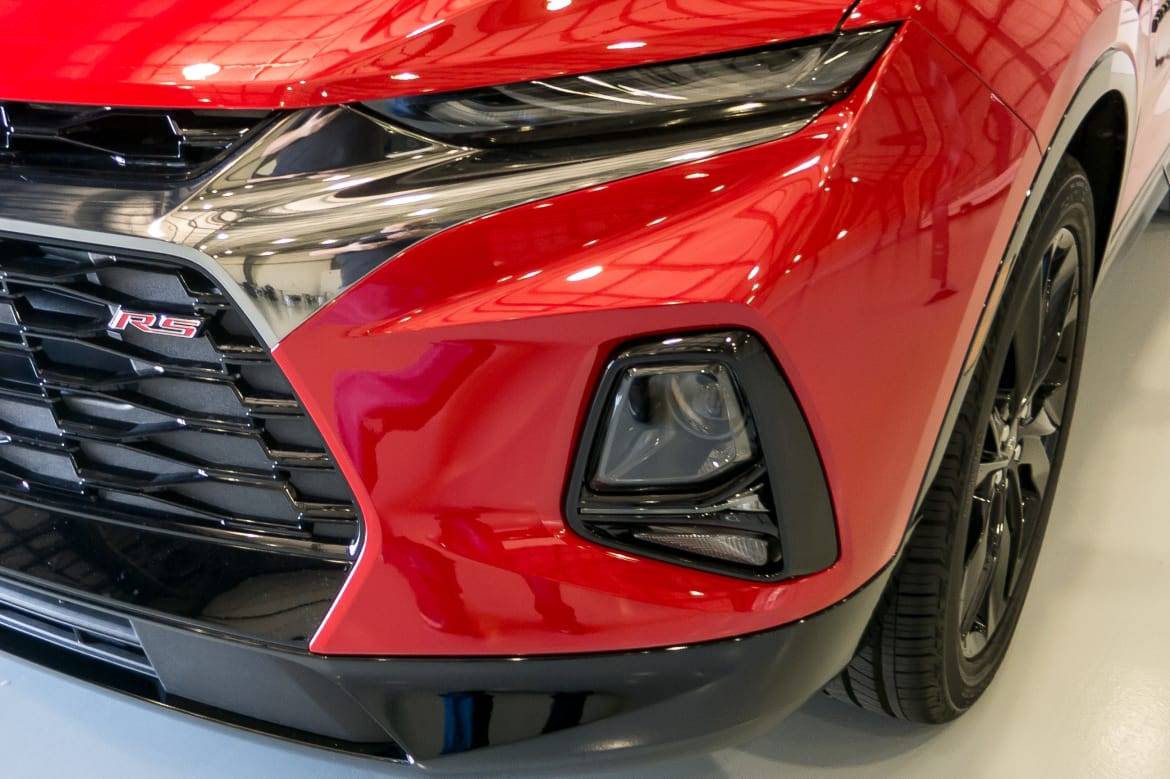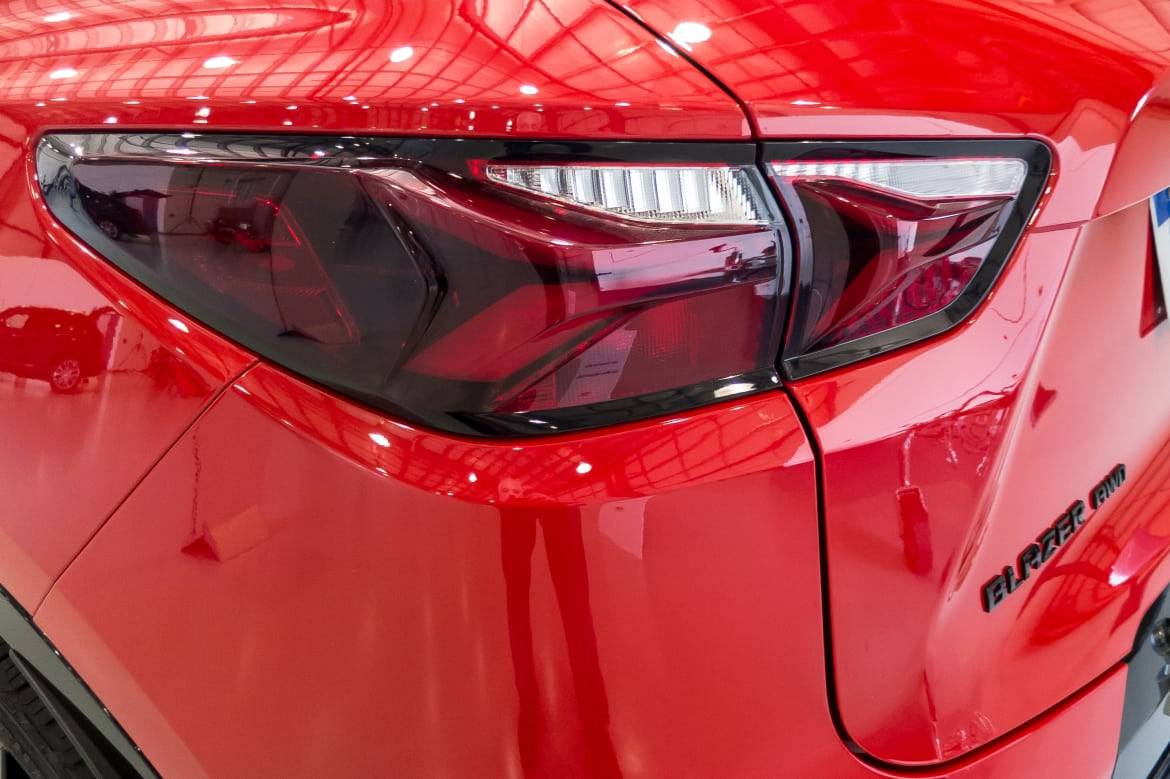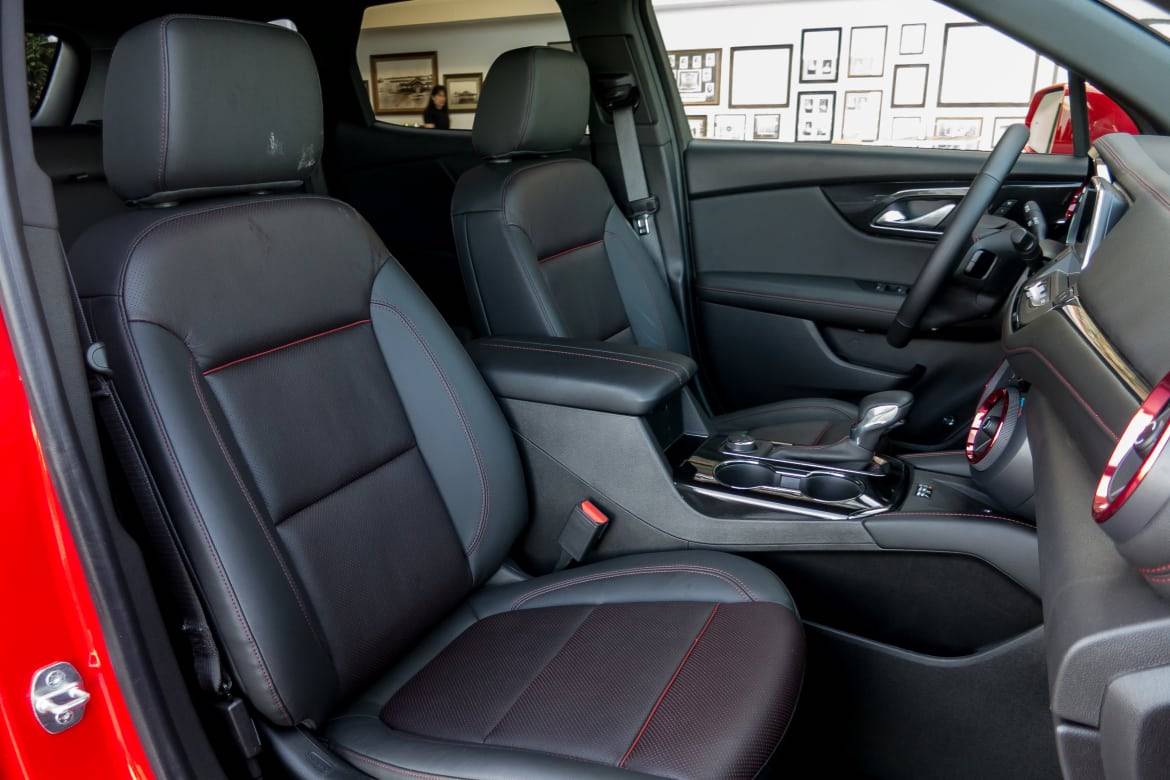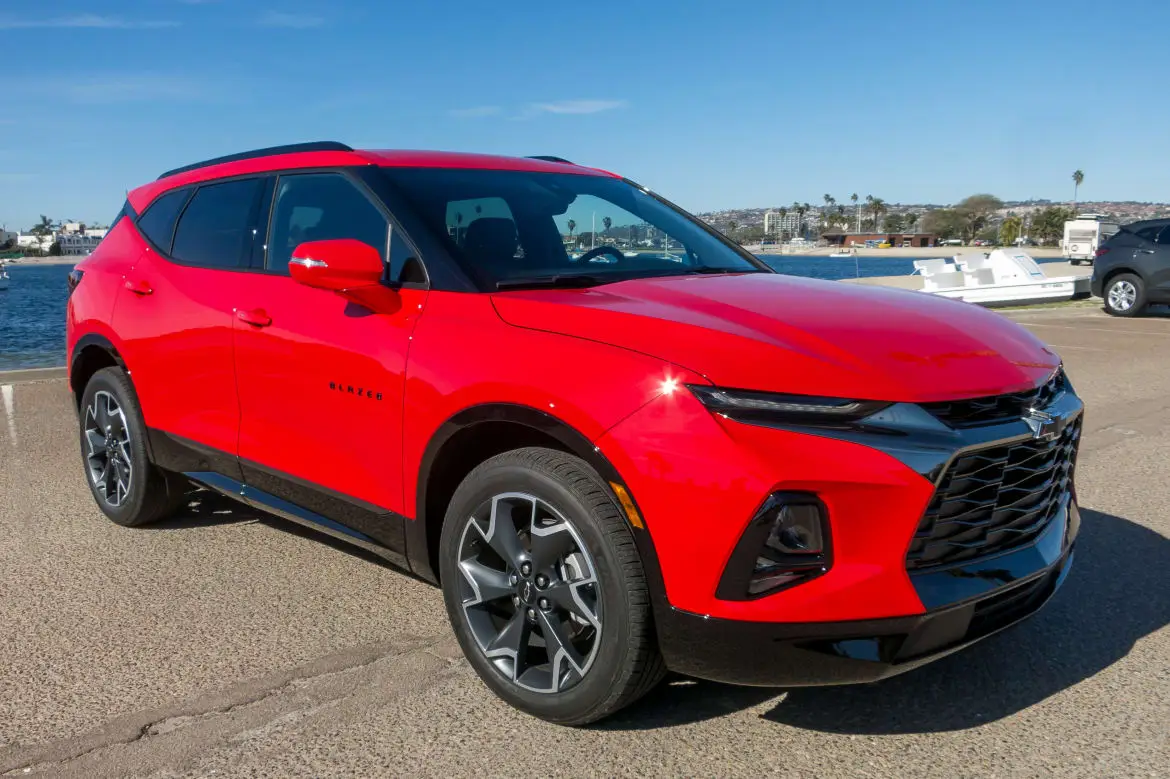
The verdict: Chevrolet has built the SUV-obsessed 21st century’s answer to the traditional family sports sedan.
Versus the competition: Competitors generally feature a lot more standard safety equipment and all-wheel drive at lower prices, but they don’t look this good. Though if sporting ability is really what you’re going for — not just sporty looks — it’s hard to top the Ford Edge ST’s twin-turbocharged muscle.
When Chevrolet first announced it would bring back the “Blazer” name and slap it on an SUV, four-wheel-drive enthusiasts around the country were thrilled: Was Chevy going to get back into the true off-road SUV game thanks to the perennial popularity of the Jeep Wrangler and the mad interest in the still-unseen, upcoming 2020 Ford Bronco? Turns out, the answer was “no.” When the 2019 Chevrolet Blazer was unveiled at a private event in the summer of 2018, we saw not a rugged off-roader at all, but rather a stylish, sporty, two-row, five-seat crossover SUV meant to challenge the Ford Edge, Hyundai Santa Fe and Nissan Murano.
Admittedly, the move makes sense. Mid-size SUVs like the new Blazer are the second-hottest-growing segment in the market (behind compact SUVs like Chevrolet’s own Equinox), so having an entry here — bringing the crossover count in Chevy showrooms up to four (Blazer, Equinox, Trax and Traverse) — couldn’t hurt. But does the market need another crossover-style SUV? Is the Blazer good enough to carve off buyers from its popular competitors?
The Sports Sedan Crossover
There’s no denying the Blazer makes a statement. There’s a presence to its styling that sets it apart in a field of boring two-box designs. The Chevrolet Camaro influences are obvious, from the swoopy front end to the prominent fenders, then reaching back to the sleek, angular taillights. An RS trim in bright red is without a doubt the sportiest looking crossover SUV in the class. While other competitors go for the rugged off-roader look, the Blazer makes no apologies about being an on-road warrior. And this makes sense: Crossovers are replacing sedans as the family vehicle of choice in America, so what should you get if you typically enjoy a sports sedan? Asks Chevy: How about a sports crossover?
More Substantial Than Expected
The biggest surprise of the Blazer is how much more substantial it feels than the Equinox. It has a more sophisticated chassis, using a McPherson strut front suspension and a five-link rear; it sits on the same one as the GMC Acadia, Cadillac XT5 and XT6. It’s wider than the Equinox and almost as wide as the much larger Traverse, which lends the Blazer a sense of stability and heft over all types of road surfaces. Chevy engineers did some amazing work isolating the Blazer from road imperfections, even with the optional 21-inch wheels. The steering has weight to it and body control is excellent, with very little wallowing in corners or undue motions that can translate into an unpleasant ride experience. This surprisingly substantial-feeling SUV’s road manners are easily a match for the Ford Edge or Nissan Murano.
Two powertrains are offered. The standard setup is a 2.5-liter four-cylinder Ecotec engine making 193 horsepower and 188 pounds-feet of torque, mated to a nine-speed automatic transmission that drives the front wheels. (All-wheel drive is not an option with the four-cylinder engine.) That four-cylinder is a perfectly fine powertrain choice; its lighter weight and lack of AWD equipment create a sprightly nimble feel. Acceleration is brisk even when getting on the highway, though it might be another story when loaded up with people and stuff. At roughly 3,800 pounds, the four-cylinder Blazer has a roughly 400-pound weight advantage over the AWD V-6 model, according to Chevrolet engineers, and that manifests in its handling and ride.
The other powertrain is GM’s ubiquitous 3.6-liter “Generation II High Feature” V-6, making 308 hp and 270 pounds-feet of torque, also mated to the nine-speed automatic. You can have it in regular, Premier or RS flavors. Chevrolet is taking a page out of Cadillac’s playbook, offering the top versions of the Blazer in two themes: luxury if you get the Premier trim, sport if you opt for the RS. All-wheel drive is optional on the V-6 Blazer, and a more sophisticated twin-clutch AWD system can be had on the Premier and RS.
The V-6 model is decidedly heavier, but it doesn’t feel poky or slow, just more substantial and solid. Acceleration is quick, but it doesn’t have the snappy torque curve of some rivals’ turbocharged four-cylinder engines. What it does enable is a 4,500-pound maximum towing capacity when properly equipped. The Premier trim feels just as solid and substantial as the base four-cylinder Blazer, with the added benefit of some extra grunt when you plant your right foot, accompanied by a muted growl.
Fuel economy takes a bit of a hit when you upgrade the engine. The Blazer is EPA-rated 22/27/24 mpg city/highway/combined for the four-cylinder model, dropping to 20/26/22 mpg for the FWD V-6 and 18/25/21 mpg for the AWD V-6. I put more than 500 miles on a Blazer RS V-6 and averaged 21.5 mpg overall — not a great number for a crossover with a nine-speed automatic and non-defeatable engine stop-start. The Blazer’s rating matches the V-6 Jeep Grand Cherokee 4×4, but it isn’t quite as good as the AWD Nissan Murano V-6 with its continuously variable automatic transmission, which rates 20/28/23 mpg, or the significantly more powerful Ford Edge ST’s 2.7-liter twin-turbo V-6, which comes in at 19/26/21 mpg.
There are a few drive modes to select from, including one that disconnects the AWD system for slightly better fuel economy. There’s a Sport mode that changes a few parameters, including AWD torque distribution but surprisingly leaving out throttle response and shift patterns for the transmission. Off-Road mode adjusts throttle response, but given the lack of significant ground clearance or underbody protection, I wouldn’t recommend taking a Blazer anywhere but a dirt road. Finally, a Tow/Haul mode holds on to lower gears longer for better response while hauling a trailer.
Sporting Pretenses
While the Premier version amps up the luxury quotient, the RS is the more dramatic of the Blazers. It adds more than just an appearance package, as we’ve seen on previous Chevrolets; it’s more like the Traverse’s RS trim level in terms of the visual and parts changes. While it doesn’t get a unique engine, like the Traverse RS has, it does receive some significant suspension and steering changes to alter its demeanor: The front struts get 40 percent more compression control, while the rear shocks improve by 15 percent. The steering ratio is quicker — a 15-to-1 ratio instead of other Blazers’ 16-to-1 ratio. The twin-clutch AWD allows torque to be transferred side to side in addition to front to back, and 21-inch wheels are optional.
All this together gives the RS a more sporting character despite it not having more power to play with. Body control remains impressive, but the quicker-ratio steering is barely noticeable. The changes don’t make the RS all that sporty, and it certainly can’t hold a candle to the performance delivered by a Ford Edge ST, which has more than 100 pounds-feet of torque superiority from its twin-turbocharged engine. This makes the RS the choice to make if you just want the styling flash it offers; the almost European-feeling ride and handling combination is mostly a bonus. Otherwise, the Premier is a perfectly acceptable (if more expensive) option.
Camaro-Influenced Cockpit
Regardless of which Blazer trim level you get, the interior shows direct influence from the Camaro sports coupe — and it’s a successful integration. The dash design is appealingly sporty, and anyone fond of the Camaro’s layout will find a lot to like in here, too, from the placement of the multimedia screen to the round vent rings that also control temperature settings. The buttons are artfully located and everything is easy to use, and we applaud Chevrolet for not removing the height-adjustable shoulder belts in the Blazer, as it’s done with just about every other new Chevy that’s come down the pike recently.
There’s a surprising amount of room inside the Blazer — plenty for four occupants (five might be a pinch due to the narrow-feeling bench backseat). The backseat slides forward and back, but it’s obvious the Blazer prioritizes passenger room over cargo space, as it features one of the smaller cargo areas among its competitors. The Blazer has 30.5 cubic feet of space behind the backseat, expandable to 64.2 cubic feet with it folded down. The Ford Edge has 39.2 cubic feet, expandable to 73.4 cubic feet, while the Nissan Murano has 31.1 cubic feet in back and 67.0 cubic feet maximum. Honda lists some rather curious numbers for a vehicle roughly the same size as the other three: It says the Passport has 41.2 cubic feet of cargo space behind the backseat, expandable to 77.5 cubic feet overall in a vehicle shorter than the Blazer.
Gripes with the interior are few, but they do exist. Most prominent is the problem with all GM interiors lately: materials quality. Some of it is perfectly fine — the dash, for instance, looks and feels good, as do the controls and touchscreen. But the door panels feature the same cheap, thin plastic trim and hard door tops as the Camaro, and plastic quality falls off dramatically in the backseat as well. It doesn’t have the more upscale look and feel of today’s Honda products, but it matches up well to the latest Nissan Murano and Hyundai Santa Fe. My other gripe is with the steering wheel, which feels rather thin compared with some competitors’ vehicles. There are no molded grippy parts to fit your hands, and I wonder why Chevy didn’t opt for something more similar to the Camaro; it would have been an easy addition to the RS to further improve its sporting character.
The Value Problem
Starting price for the new Blazer is a tick less than $30,000 including destination fee, while a loaded AWD Premier tops off around the $54,000 mark. That’s pretty much spot-on for Chevrolet’s stated competition, which includes the Nissan Murano, Hyundai Santa Fe, Ford Edge and even potentially the Jeep Grand Cherokee (we’re not quite sure this one fits, however, Chevy marketing folks).
The thing is, when you start exploring the upper end of this price spectrum, while $46,000 can get you a well-equipped Blazer RS, it can also get you a well-equipped Edge ST that will satisfy sports SUV enthusiasts in much more rapid fashion. The Premier, however, is more of a matchup for the premium trims of these competitors, putting Chevy squarely in the hunt for stylish-two-row-SUV shoppers.
The bigger issue comes when you start comparing what you get in lesser Blazers with their competition. The least expensive AWD Blazer requires the V-6 and is priced at $37,195 — nearly $5,000 more than the least expensive Nissan Murano or Ford Edge with AWD. Here’s the real kicker: The Hyundai Santa Fe offers an AWD four-cylinder version for less money than the least expensive Blazer of any kind.
The Blazer is otherwise priced similarly to the Murano, Edge and Santa Fe when you consider the range in which it operates, though the equipment list looks very different across competitors. For instance: Want automatic emergency braking, a modern safety feature that comes standard in a lot of new vehicles? It’s standard on the Edge ($31,090) and Santa Fe (which starts less than $30,000), and the Murano has it standard for just about $32,000. But if you want it on the Blazer, you’ll have to pony up for either the RS or Premier trim level and then select it in a package, so the cheapest Blazer with automatic emergency braking is a $45,370 FWD RS. That’s about $15,000 more than the least expensive Edge or Santa Fe with this technology. Compare the Blazer with its competitors here.
So the value question is a valid one for the Blazer. Chevy’s strategy of providing big discounts, however, may equalize that when it comes time to visit a dealer. The brand has crafted a worthy competitor in the segment, however, so the Blazer’s success or failure won’t be from its lack of ability.
Cars.com’s Editorial department is your source for automotive news and reviews. In line with Cars.com’s long-standing ethics policy, editors and reviewers don’t accept gifts or free trips from automakers. The Editorial department is independent of Cars.com’s advertising, sales and sponsored content departments.



































